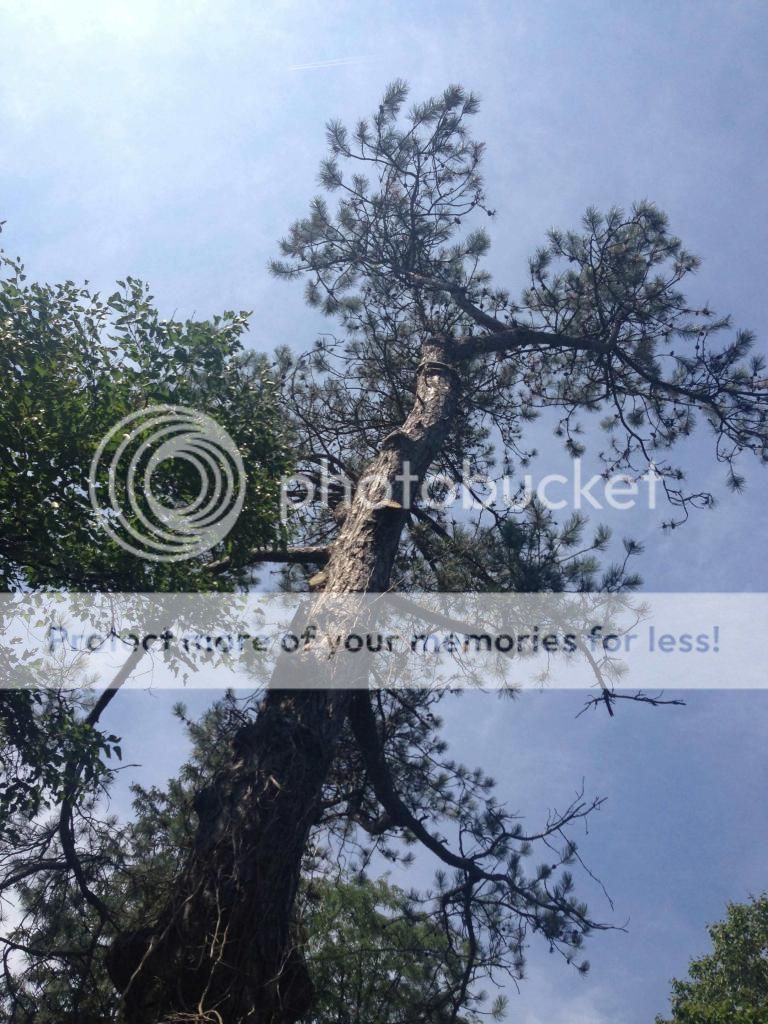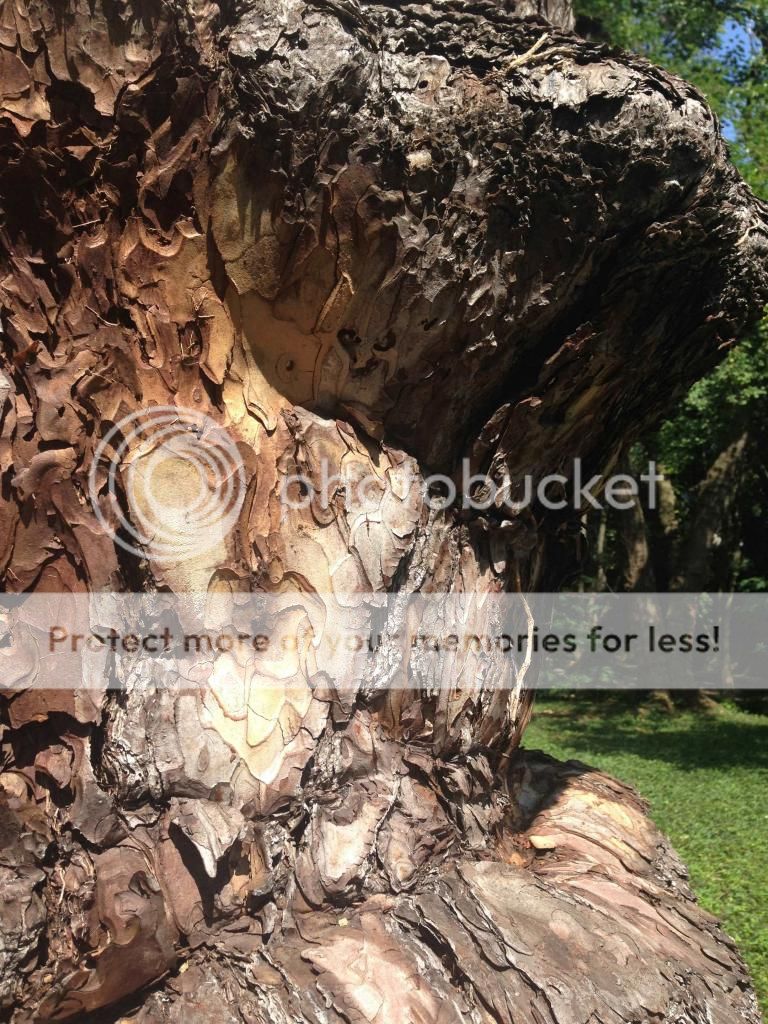Definitive Dave
wanna-be saw racer, saw hoarder, parts whore
- Joined
- Jul 27, 2013
- Messages
- 2,118
- Reaction score
- 5,087
I have a client with two of these trees on the property, it a historic registry residence and a very regulated old neighborhood. The client asked us to remove them last year (our firtst at this property) as there were nearly no visible needles on either one. I have never seen a tree like this and have been in the green industry in Ohio for about 30 years now.
The city arborist asked us to remove the masses of vines on the trunks and remove all the dead limbs up to the top layer where a few needles remained and denied the permit for removal on a temporary basis to see what the trees would do.
Well this year we have marked improvement in the trees, when we saw some new needles breaking this spring we made sure to feed them well.
Now that they don't look completely dead the customer likes them and we would love to see them thrive as they are so unusual (at least around here).
The city arborist has moved on and the less I deal with bureaucrats, the more zen I feel.
Anybody know what these are and some pointers to proper care and feeding for a long thriving existence?
DDave





The city arborist asked us to remove the masses of vines on the trunks and remove all the dead limbs up to the top layer where a few needles remained and denied the permit for removal on a temporary basis to see what the trees would do.
Well this year we have marked improvement in the trees, when we saw some new needles breaking this spring we made sure to feed them well.
Now that they don't look completely dead the customer likes them and we would love to see them thrive as they are so unusual (at least around here).
The city arborist has moved on and the less I deal with bureaucrats, the more zen I feel.
Anybody know what these are and some pointers to proper care and feeding for a long thriving existence?
DDave









